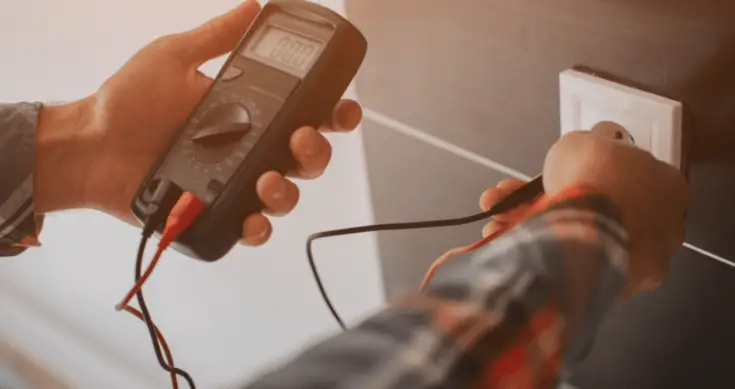Estimated reading time: 3 minutes
Insulation resistance reading is one of the basic requirements of electrical installation and maintenance. Insulation resistance test helps to verify the reliability of the insulating materials – whether it is wire and cable insulation or motor winding insulation. All electrical insulations at your commercial premises must resist the flow of current and keep it within the conductor. An IR tester helps you to test the insulation reading.
Why does insulation fail?
The main factors that contribute to the degradation of insulation include:
- Temperature – extreme hot and cold temperature will cause the degradation of insulation
- Electrical – usage of incorrect cable product may damage insulation in over-voltage and under-voltage conditions
- Physical – any physical damage caused by blunt trauma can lead to degradation of insulation
- Chemical – motor bearing oil, plant grime, and dust can lead to deterioration of insulation
- Environment – environmental factors such as sun, rain, and exposure to moisture also affects insulation
All of these factors can lead to unreliable and unsafe electrical installations. Hence, it is necessary to monitor insulation resistance regularly.
Understanding resistance
A voltage or electrical pressure causes the current to flow through a conductor. However, if the conductor has lower resistance, more current passes through it even when the voltage remains the same. It might lead to electrical hazards including damages to appliances and properties.
It is necessary to understand that no insulation is perfect. There is some current passing along the insulation or to the ground through it. This is leakage current. It may not be very high, but it is electricity nonetheless. So, if there is a higher voltage, it would lead to a higher amount of leakage current too. Although it is not detrimental to good insulation, it can be a real source of the problem if you have deteriorated insulation at your office or workplace.
That brings us to the vital question – what’s good insulation? Well, any insulation with relatively high resistance to current can be called good insulation. IR testing is a way to determine insulation capability. By measuring current at regular intervals through IR testing, you can verify the integrity of the insulation.
How to measure IR?
IR is measured with an IR tester. It is a portable instrument, which is a resistance meter, or ohmmeter, with a built-in DC generator to develop a high DC voltage. For testing, two leads are connected to a circuit, and a voltage is passed through this circuit. This voltage causes a small current to pass through and over the insulated surfaces. The tester notes the changes, if any, and provides a direct reading of IR in ohms or megohms.
The same tester might show different readings for the same circuit even if the reading is performed one after another. That is quite natural because several factors affect the reading. Hence, you must use a range of test results over a period to determine the integrity of the insulation. One-off readings may not give you the true picture.
Share this content:



